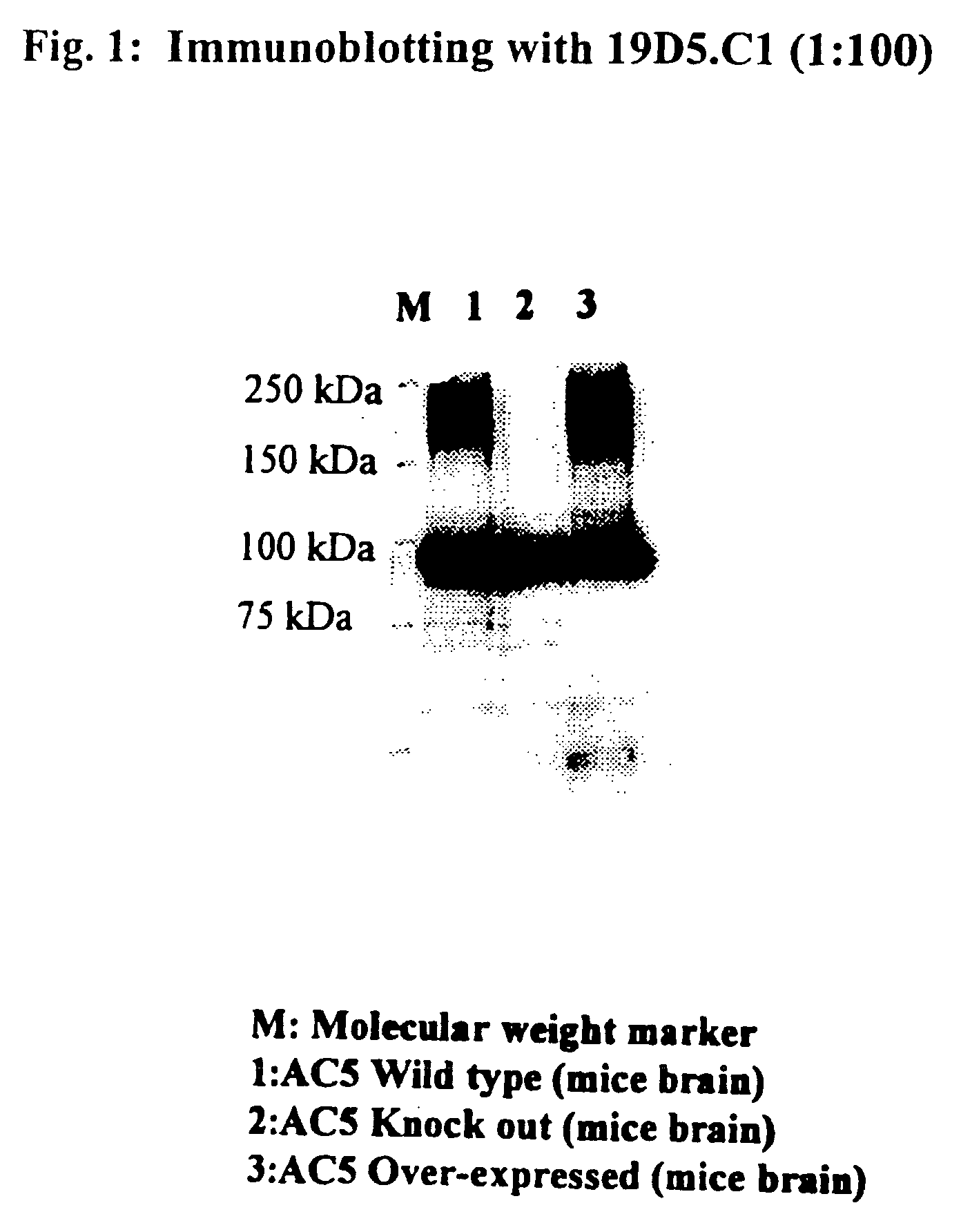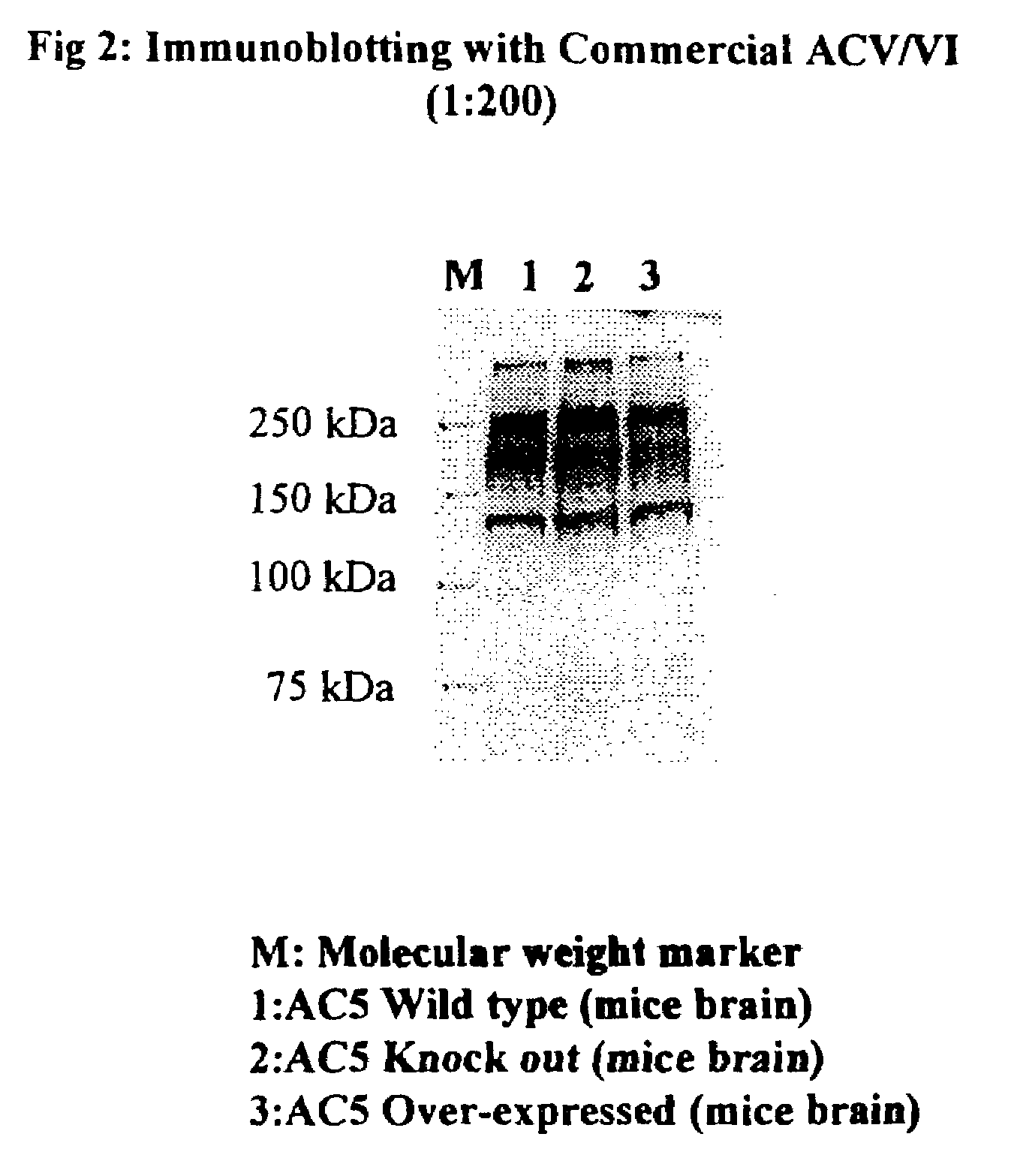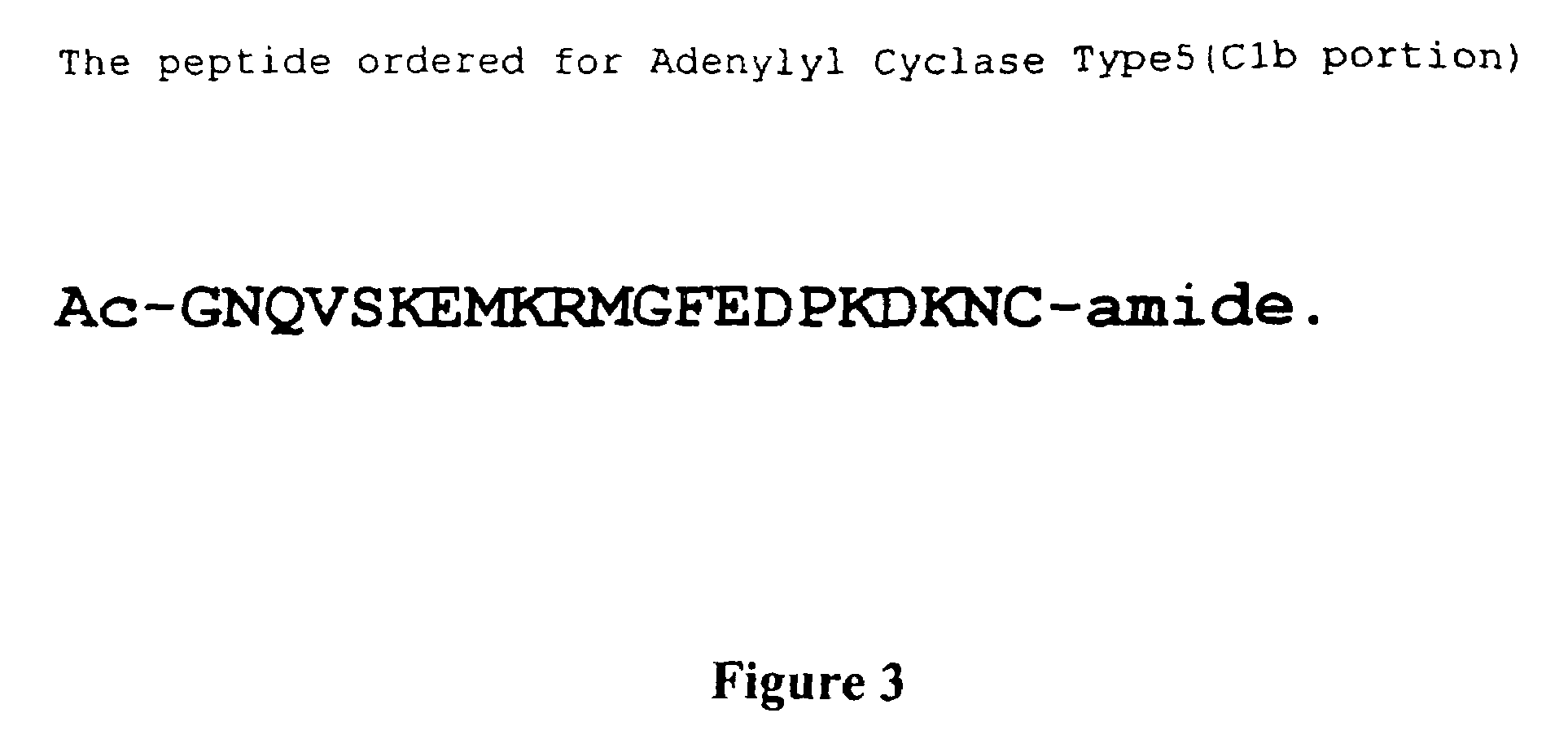Adenylyl cyclase antibodies, compositions and uses thereof
a technology of adenylyl cyclase and antibodies, applied in the field of cardiac and neurology, can solve the problems of inability to address the role of these isoforms in neuronal function in vivo, the physiological significance of the existence of multiple isoforms and the role of ac-5 in the regulation of camp signal, so as to improve cardiac output, improve cardiac function, and improve survival.
- Summary
- Abstract
- Description
- Claims
- Application Information
AI Technical Summary
Benefits of technology
Problems solved by technology
Method used
Image
Examples
example 1
Generation of antibodies specific for adenylyl cyclase 5 (AC5)
[0192]The peptide shown in FIG. 3 was administered by intraperitoneal injection alternating with subcutaneous injection to BALB / c mice. The amount of the peptide delivered was 25 μg per injection. The peptide was initially administered with Titermax, then subsequent injections were made with Freund's incomplete adjuvant. After the mice received 3 to 5 injections of 25 μg each at 2 week intervals, the spleens were removed and splenocytes were extracted and fused with myeloma cells using the procedure described by Kohler and Milstein [(1975) Nature 256:495-497] and Harlow and Lane (Antibodies: A Laboratory Manual Cold Spring Harbor Laboratory, New York (1988)). In the case of the 19D5.C1 monoclonal antibody, a panel of monoclonal antibodies (mAbs) derived from splenocytes of Balb / c mice injected with the peptide of FIG. 3 was constructed as described. After the initial fusion and cloning, wells with viable IgG-secreting hyb...
example 2
Generation of Knockout Mice
[0195]The targeting construct was prepared by ligating a 2.2-kb XhoI-PstI fragment from the 5′ end of the type 5 AC gene, containing the exon with the first translation initiation site (5′-arm), a 1.7-kb fragment containing a neomycin resistance gene fragment (neo) driven by a phosphoglycerate kinase (PGK) promoter, and a BssHII-NcoI 7.0-kb fragment of the type 5 AC gene (3′-arm), into pBluscript II KS (Stratagene, La Jolla, Calif., USA) (FIG. 4A). The type 5 AC gene has another translational start site accompanied by a reasonable Kozak consensus sequence located 738-bp downstream of the first translational start site within the same exon. To impair the second site, inventors excised a 0.15 kb PstI-BssHII fragment containing the second ATG and replaced it with a PGK-neo cassette in the final targeting vector (FIG. 4A).
[0196]Embryonic stem cells were transfected with 50 μg linearized targeting vector by electroporation (Bio-Rad Gene pulsar set at 250 V and ...
example 3
Motor Dysfunction in AC5KO Mice
[0212]The striatum receives neuronal input from the cortex, feed backing its signal to the thalamus and cortex via the substantia nigra to coordinate extra-pyramidal signal and regulate motor function. Neuronal activity of the striatum is modulated by dopaminergic neurons that are derived from the substantia nigra. Dopamine receptors in the striatum, both D1 and D2 subtypes, are coupled to AC via G protein to modulate cAMP signal within the striatum. Degeneration of these nigro-striatal neurons, ie, the loss of dopaminergic input to the striatum, is a hallmark of pathological changes seen in Parkinson's disease, which is represented by bradykinesia, tremor and the loss of coordinated movements. Parkinson's disease is a common disease among the elderly, only next to Alzheimer's disease. The nature of this neuronal dysfunction, however, is poorly understood. Previous studies demonstrated that alteration of dopaminergic signal, such as the depletion of do...
PUM
| Property | Measurement | Unit |
|---|---|---|
| diastolic blood pressure | aaaaa | aaaaa |
| diastolic blood pressure | aaaaa | aaaaa |
| pH | aaaaa | aaaaa |
Abstract
Description
Claims
Application Information
 Login to View More
Login to View More - R&D
- Intellectual Property
- Life Sciences
- Materials
- Tech Scout
- Unparalleled Data Quality
- Higher Quality Content
- 60% Fewer Hallucinations
Browse by: Latest US Patents, China's latest patents, Technical Efficacy Thesaurus, Application Domain, Technology Topic, Popular Technical Reports.
© 2025 PatSnap. All rights reserved.Legal|Privacy policy|Modern Slavery Act Transparency Statement|Sitemap|About US| Contact US: help@patsnap.com



